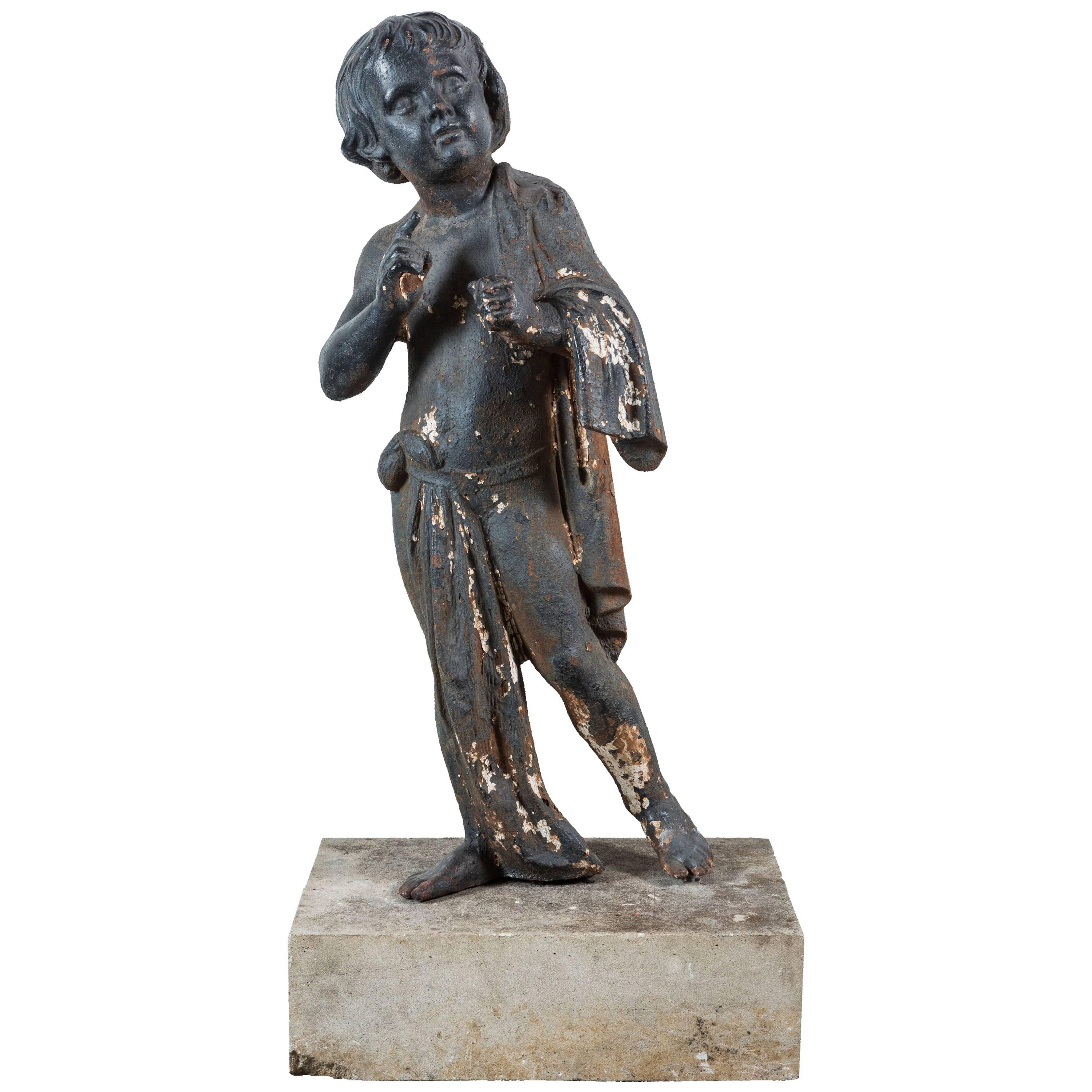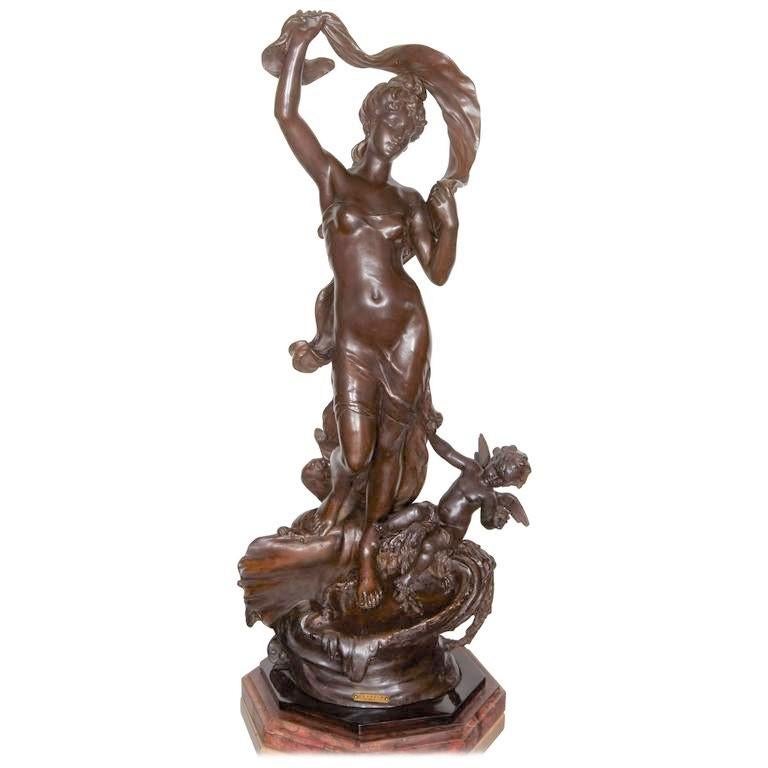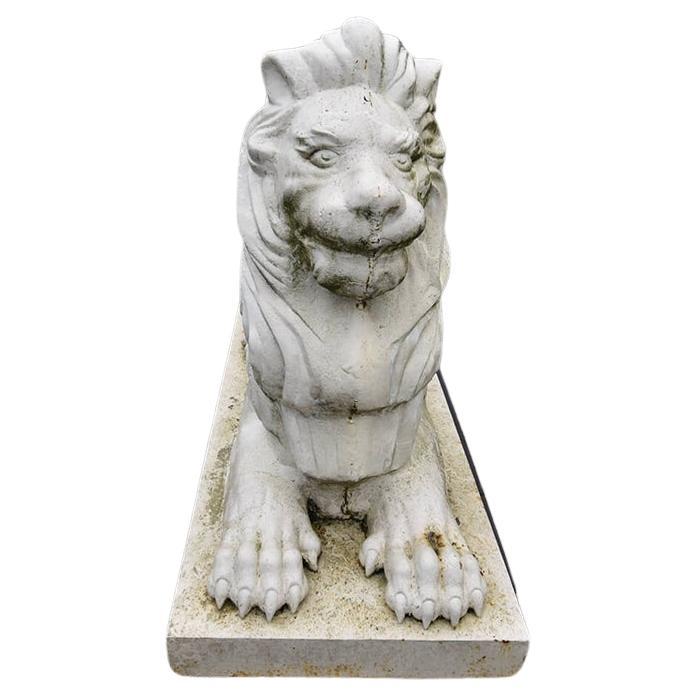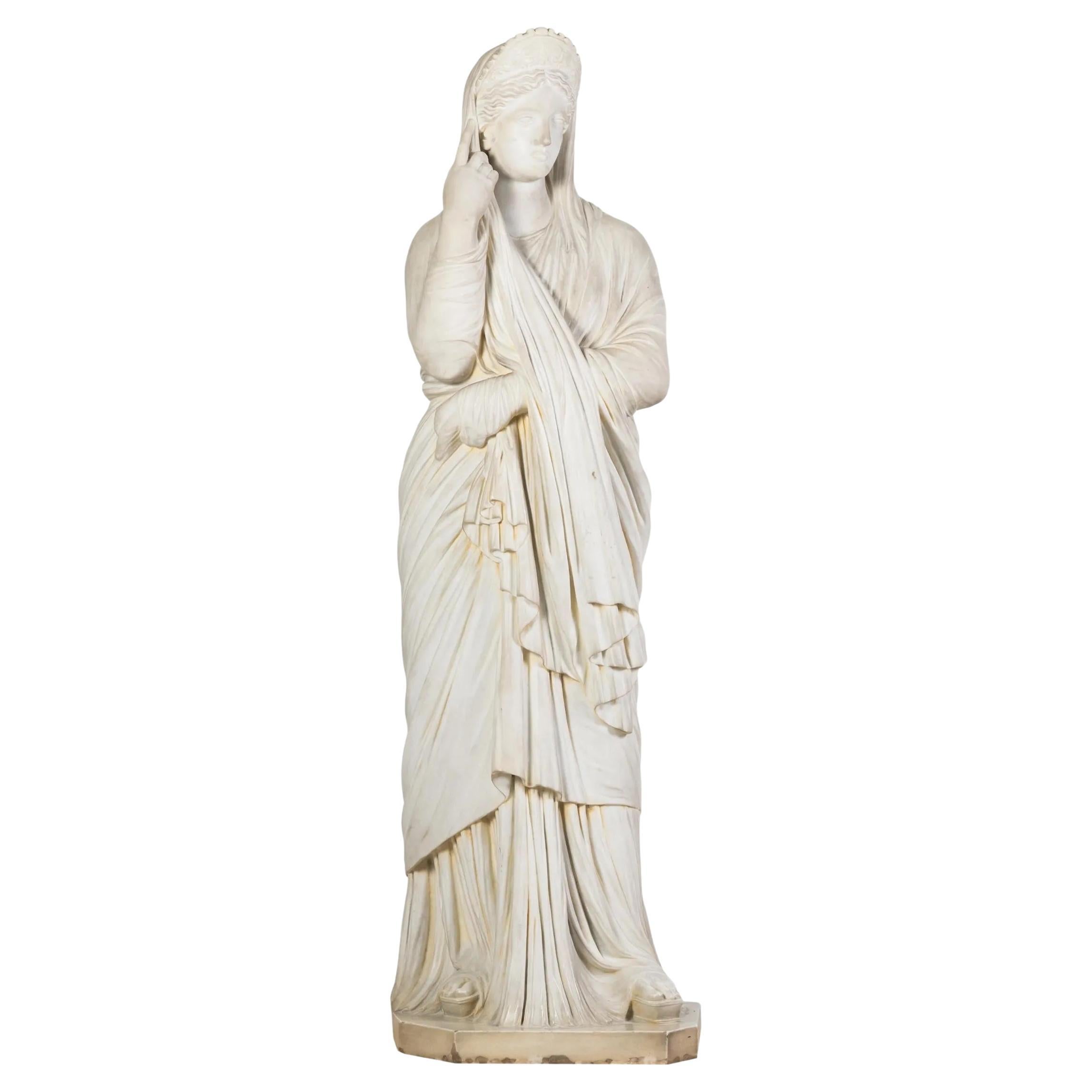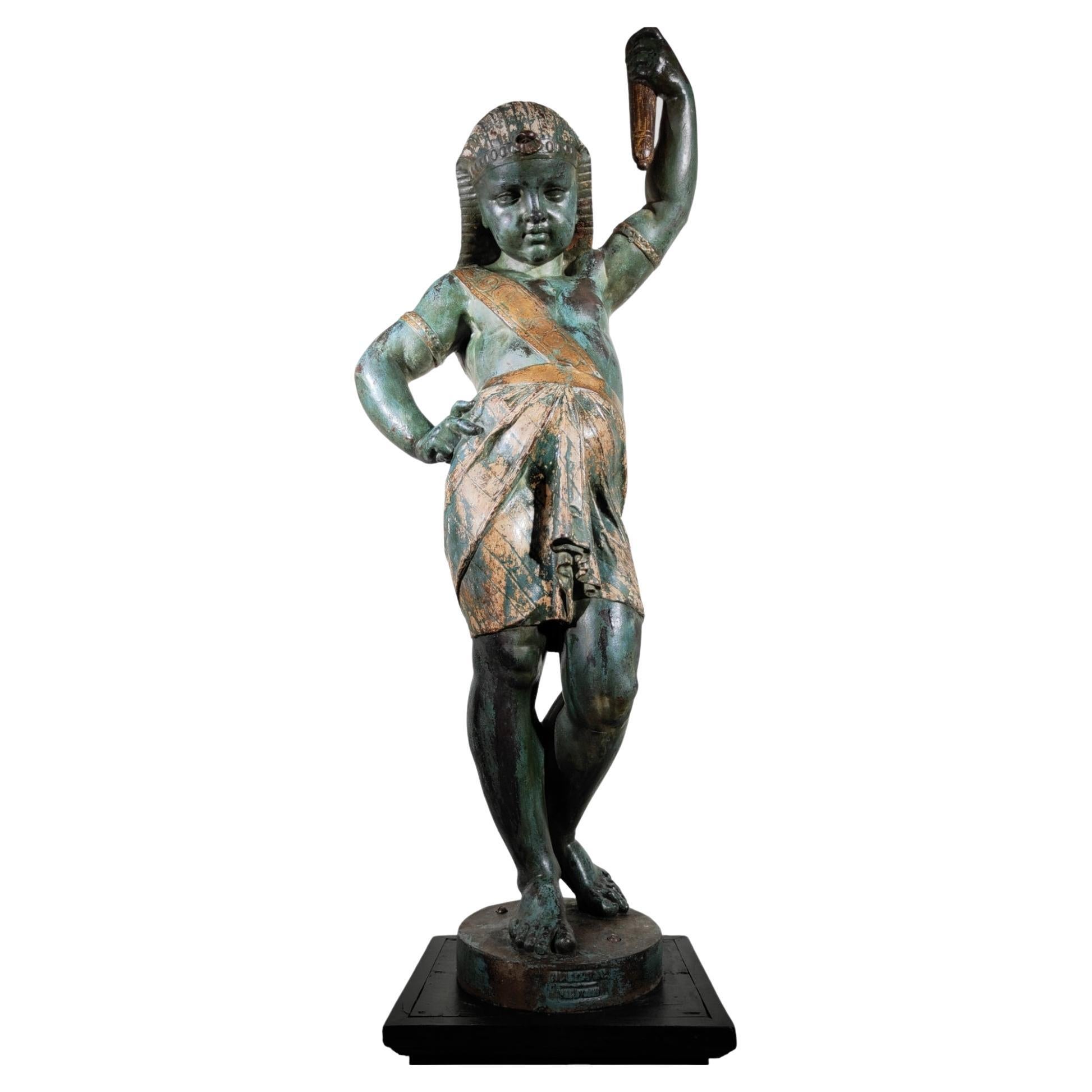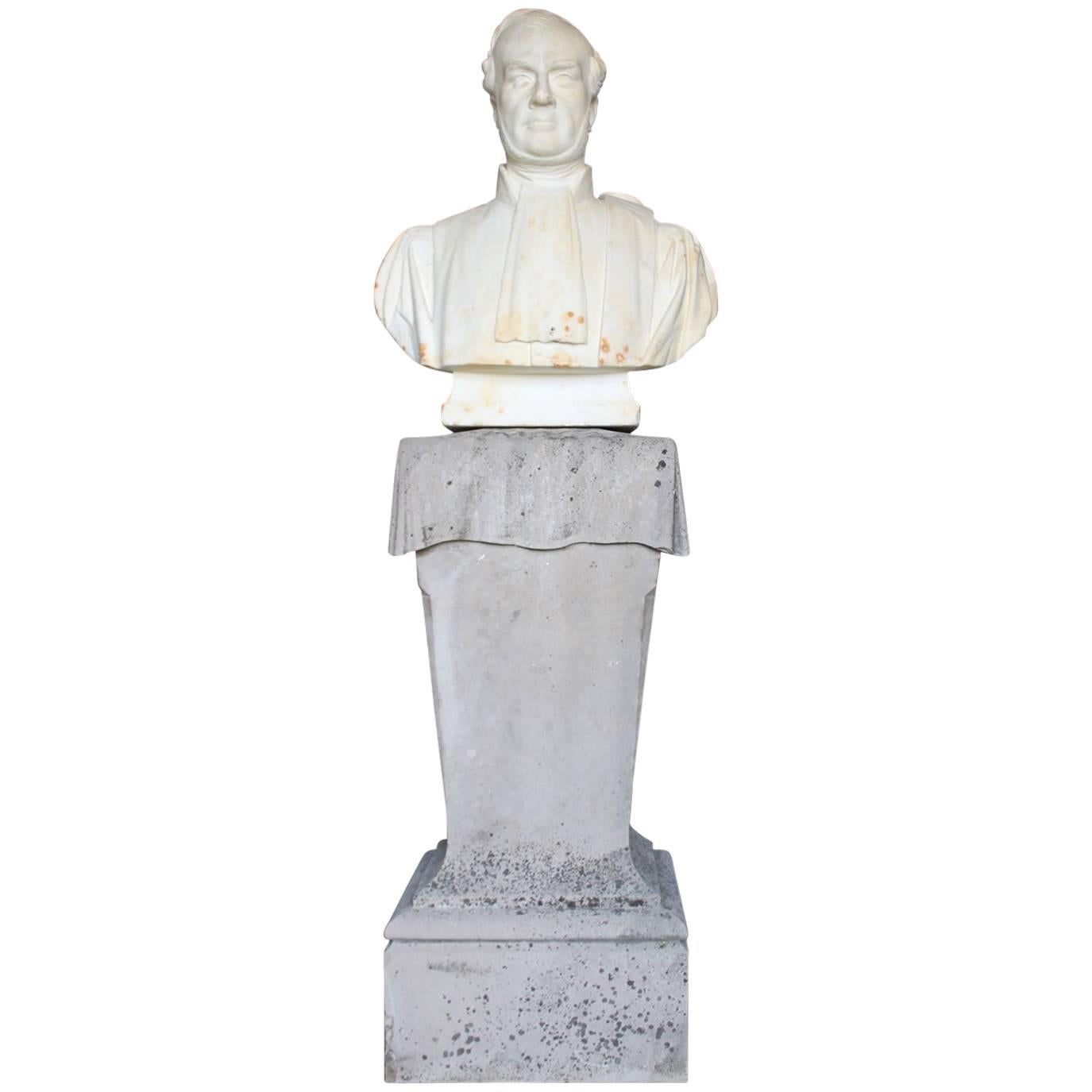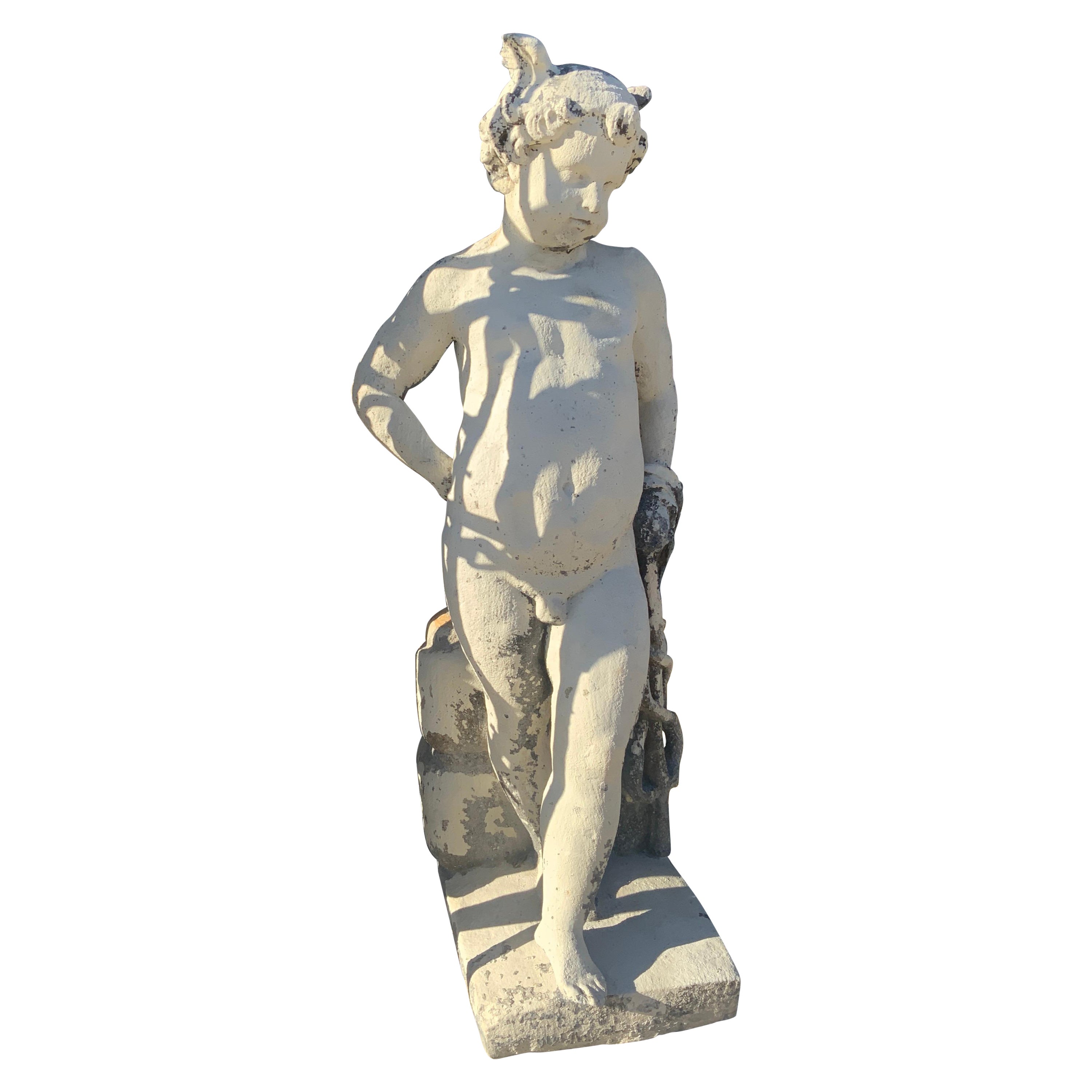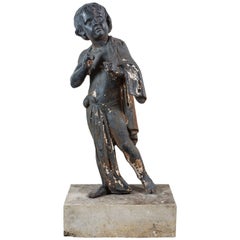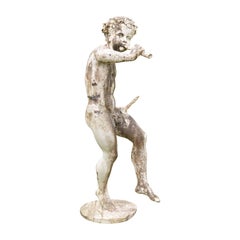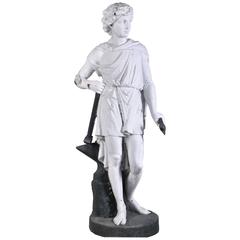
Young Blacksmith, Cast Iron Statue After Mathurin Moreau, 19th Century
View Similar Items
1 of 10
Young Blacksmith, Cast Iron Statue After Mathurin Moreau, 19th Century
About the Item
- Creator:Mathurin Moreau (Artist)
- Attributed to:Val D'Osne Foundry (Manufacturer)
- Dimensions:Height: 63.39 in (161 cm)Width: 25.99 in (66 cm)Depth: 19.69 in (50 cm)
- Style:Napoleon III (Of the Period)
- Materials and Techniques:Iron,Cast
- Place of Origin:
- Period:
- Date of Manufacture:circa 1880
- Condition:Wear consistent with age and use. Minor losses. Patina of the time. Missing part on one leg.
- Seller Location:Saint Ouen, FR
- Reference Number:Seller: 103081stDibs: LU93084406823
Mathurin Moreau
Mathurin Moreau was a renowned French sculptor born on November 18, 1822, in Dijon, France, into a family of artists. He was the son of sculptor Jean-Baptiste Moreau and the brother of sculptors Hippolyte and Auguste Moreau, thus part of a dynasty that significantly influenced French sculpture in the 19th century. Educated at the École des Beaux-Arts under the tutelage of Étienne-Jules Ramey and Augustin-Alexandre Dumont, Moreau went on to become a prominent figure in the French art scene. He was known for his exceptional skills in crafting bronze sculptures, which are among the most celebrated aspects of his artistic legacy. Moreau debuted at the Salon in 1848 and rapidly gained acclaim. His works often depicted allegorical figures, mythological scenes, and typical rural life, capturing both the idealistic beauty and the detailed realism that were hallmarks of the period's sculpture. Many of his bronzes were cast by the famous Val d'Osne foundry, which helped ensure the high quality of his pieces. The foundry was known for its superb craftsmanship and was one of the primary mediums for Moreau’s creations. Throughout his career, Mathurin Moreau received numerous awards, including a medal of honor at the Exposition Universelle in 1878. He was also made a Knight of the Legion of Honor in 1865 and rose to become an officer of the order in 1885. His artworks were not only celebrated in France but also internationally, as his bronzes found homes in diverse locations, from Parisian squares to foreign collections. Moreau's works are characterized by their classical style, attention to detail, and the expressive beauty of their subjects. Some of his notable bronze sculptures include allegorical representations such as "La Danse" and "L’Eau". These pieces exemplify his ability to translate ethereal themes into tangible beauty, making his sculptures highly sought after by collectors and museums worldwide. Mathurin Moreau passed away in 1912, leaving behind a rich legacy of artistic achievement that continues to be celebrated and revered in the art world today. His sculptures, especially his bronzes, remain valuable for their artistic and historical significance, often fetching high prices at auctions and retaining a place of prominence in collections of 19th-century French art.
You May Also Like
- 19th French Century Cast Iron Statue FountainLocated in Berlin, DEThis 19th century antique cast iron statue fountain. Fantastic, vibrant patina with traces of ancient paint.Category
Antique 1820s French Fountains
MaterialsIron
- 19th Century Cast Iron Fiske Cherub Boy Garden StatueBy J.W. Fiske & CompanyLocated in Santa Monica, CACherub garden statue attributed to Fiske Foundry, circa 1870s. Great original black surface with traces of old white paint surface. Holes in feet ...Category
Antique Late 19th Century American Folk Art Garden Ornaments
MaterialsLimestone, Iron
- 19th Century French cast iron statue, stamped A. Durenne sommevoireLocated in Maidstone, GBA beautiful and very high quality French 19th century cast iron statue of a young boy dancing and skipping while playing the flutes, signed by the famous A. Durenne sommevoire. Excep...Category
Antique 19th Century French Statues
MaterialsIron
- Pair of French 19th Century Lifesize Cast-Iron Sculpture Torcheres, Val d'OsneBy Val D'Osne FoundryLocated in Los Angeles, CAA superb quality and palatial pair of French 19th century lifesize cast-iron sculptures - torcheres of Native American Indians titled "L’ Indienne" designed by Jules Salmson (French, 1823-1902) and Cast by Le Fonderies d'Art du Val d'Osne, each standing figure representing a Native American Indian male and a female scantily dressed in their native robes, one arm raised holding a light-torch with an opaline glass globe, both wearing earrings, seashell necklaces and arm-braces, raised on cylindrical cast-iron stand. Signed/cast on each pedestal: “VAL D’OSNE”. (Electrified). Paris, circa 1870-1880. Overall hHeight: 127 inches (322.6 cm) Pedestal height: 39 inches (99.1 cm) Indian man's width: 22 inches (55.9 cm) Indian man's depth: 26 3/4 inches (68 cm) Indian woman's width: 28 inches (71.1 cm) Indian woman's depth: 25 inches (63.5 cm) These fantastic and impressive pair of cast-iron sculptures, most likely representing Hiawatha and Minnehaha, were probably comissioned to Le Fonderies d'Art du Val d'Osne for export to the America's to decorate governmental buildings and parks which makes these pair a rare find and now available for a private collection. Iron sculptures were preferred over bronze for outdoor park and building decorations for their long lasting resistance to all types of weather conditions. An identical pair of sculptures, also by Val d' Osne, are currently exhibited at the National Garden of Congress in Santiago, Chile. View Pages No. 87, 88, 89. Another identical pair are also currently exhibited at The Musée de la Ville - Indian Museum "O Indio do Museo da Cidade" in Rio de Janeiro, Brazil. Another identical pair decorate the front of the Ópera Teatro Amazonas, Manaús, Brazil. A single figure of the female Indian...Category
Antique 19th Century French Tribal Figurative Sculptures
MaterialsIron
- 19th Century Bronze Statue by August Moreau "Deux Enfants"Located in London, GBA mid 19th century bronze casting of classical boy and girl. The girl holding a sheaf of wheat, the base decorated with foliage. Titled "Deux Enfants" and...Category
Antique 19th Century French Statues
MaterialsBronze
- Very Large Original French 19th Century spelter Statue Signed Hippolyte MoreauBy Hippolyte François MoreauLocated in New York City, NYFrench late 19th century spelter sculpture by Hippolyte Moreau fitted with original 1 7/8" thick rouge griotte marble base. Hippolyte was one of the famous Moreau brothers, all of whom were sculptors. He was born in Dijon France in 1832 and died in 1927. This statue, in a warm chocolate brown patina depicts a diaphanously dressed woman with flowing scarf overhead and winged cherob at her side resting on the crest of a wave and shell. Hippolyte Moreau exhibited in the Salon des Artistes Français at the turn of the century and won a medal at the Universal Exposition in 1878 and another at the 1900 World Expo. Most of his works are preserved in the Museum of Fine Arts in Dijon. The light beige pedestal...Category
Antique Late 19th Century French Beaux Arts Figurative Sculptures
MaterialsGriotte Marble, Spelter

